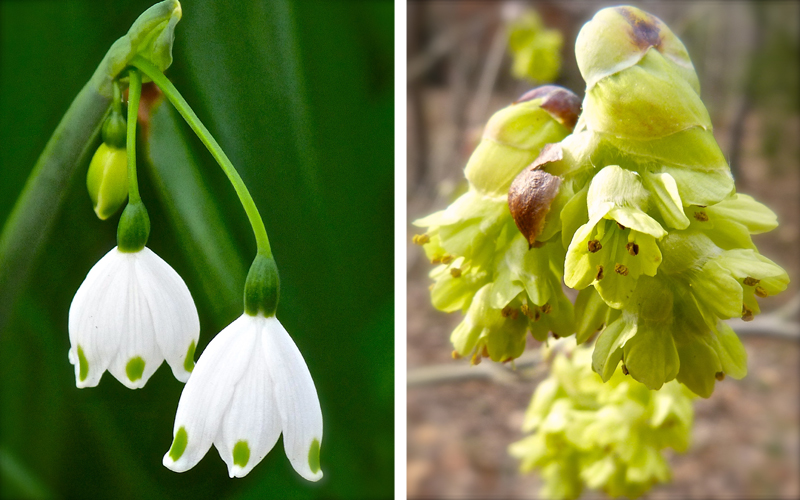Edgeworthia, a Delightful, Easy-Care Shrub
 Sunday, September 14, 2014 at 4:50PM
Sunday, September 14, 2014 at 4:50PM Just three years ago I purchased an Edgeworthia chrysantha, also called Chinese Paperbush. This deciduous shrub was a small thing at the time, about a foot tall, but I was captivated by its sphere of tubular flowers, reminding me of a little girl's white tutu with frilly yellow petticoats. So far I have nothing but good things to say about this plant, which provides multi-seasonal interest with little work from me. My Edgeworthia, though not yet a mature specimen, has already grown into a delightful shrub whose architectural form, cinnamon-colored stems and soft fuzzy leaves, six inches or more in length, are already making a statement in the garden.
So far I have nothing but good things to say about this plant, which provides multi-seasonal interest with little work from me. My Edgeworthia, though not yet a mature specimen, has already grown into a delightful shrub whose architectural form, cinnamon-colored stems and soft fuzzy leaves, six inches or more in length, are already making a statement in the garden. The shrub is often advertised as growing to 5 feet, but it can grow in an umbrella shape up to 8 feet tall by 10 feet wide, so I have left plenty of room for it.
The shrub is often advertised as growing to 5 feet, but it can grow in an umbrella shape up to 8 feet tall by 10 feet wide, so I have left plenty of room for it.  My three year old Edgeworthia has already grown to about four feet tall and wide.
My three year old Edgeworthia has already grown to about four feet tall and wide.
 This public domain photo shows a mature Edgeworthia laden with silver buds.As beautiful as Edgeworthia is during the growing season, the most outstanding feature has to be its fragrant flowers. Tight silver buds begin to swell with the approach of winter, and the flowers bloom on the tips of naked branches in late winter through early spring. They appear at the same time as those of its cousin, Daphne odora. Both shrubs are members of the Thymelaecea family. Sometimes Edgeworthia is call Yellow Daphne. The silver outer surface of its long-lasting blooms are furry in appearance, while the insides of the tubules are waxy. The wonderful spicy fragrance will have you sniffing, but you have to get down and look upward to appreciate the full beauty of the nodding blooms.
This public domain photo shows a mature Edgeworthia laden with silver buds.As beautiful as Edgeworthia is during the growing season, the most outstanding feature has to be its fragrant flowers. Tight silver buds begin to swell with the approach of winter, and the flowers bloom on the tips of naked branches in late winter through early spring. They appear at the same time as those of its cousin, Daphne odora. Both shrubs are members of the Thymelaecea family. Sometimes Edgeworthia is call Yellow Daphne. The silver outer surface of its long-lasting blooms are furry in appearance, while the insides of the tubules are waxy. The wonderful spicy fragrance will have you sniffing, but you have to get down and look upward to appreciate the full beauty of the nodding blooms.
This has been a trouble-free shrub for me. I have not done anything to it since I planted it, except to apply a fish emulsion solution to it in early spring. I planted it in in partial shade under the high branches of an oak tree. Edgeworthia prefers well-drained soil, but for best flower production it needs plenty of moisture during the growing season. If established in soil high in organic matter, it is fairly drought tolerant. It also is deer resistant. It grows well in hardiness zones 7-9, and it may survive in protected areas of zone 6.
There are several cultivars of this shrub, some having orange or red blooms. Edgeworthia papyrifera is very similar, though smaller and generally not as fragrant nor as hardy as E. chrysantha.








